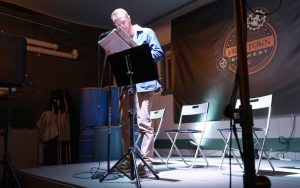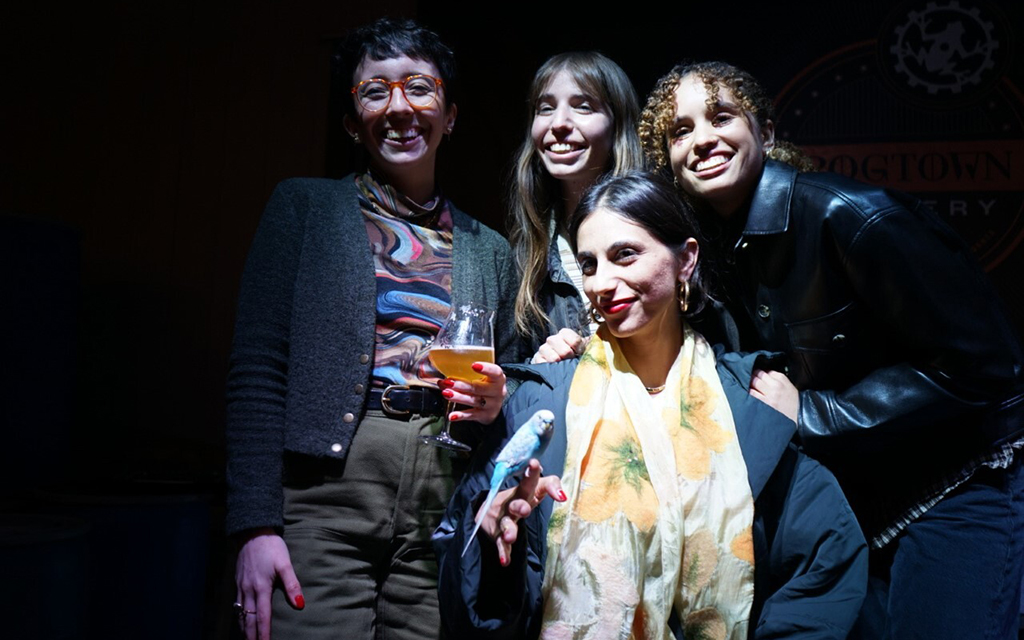LOS ANGELES – It’s not the Rio Grande, Colorado or Gila. It’s possibly the most unloved river in the country. And an artistic group of environmentalists is out to save it.
The activists’ cause is trying to show the potential for the neglected Los Angeles River. And on a recent night, they were trying to bring attention to the issue through a story slam.
The LA River, as it’s commonly called, flows from the San Fernando Valley and past the city’s massive Griffith Park and through downtown, eventually dumping into the ocean in Long Beach, a total of 51 miles.
To most Angelenos, it’s nothing more than a concrete-lined flood-control channel with barely a trickle most of the year. But LA River enthusiasts point to unpaved sections filled with greenery and wildlife as examples of what it could become, both an attractive resource and one that becomes a verdant oxygen-producing tool in the fight against a warming planet.
This is one of “Los Angeles’ greatest tools for climate resilience,” said Dennis Mabasa, chief operations officer for Friends of the LA River.
The organization, along with Nova Community Arts and a group called Fifty-One Miles gathered at the local brewery in Los Angeles’ trendy Frogtown section to hear storytellers share their personal connection to the Los Angeles River.
The river was once a thriving and unifying water source for the people and wildlife until it was paved and fenced in 1938.
In 1986, poet and activist Lewis MacAdams cut a hole in the chain-link fence that kept Angelenos from the river. From that act, Friends of the LA River was born. For over 30 years, the organization has aspired to transform the river into a dynamic and functioning ecosystem.
Hannah Michael Flynn is one of three graduate students in landscape architecture in Fifty-One Miles. At the event, she acknowledged the Tongva tribe, which lived along the river.

Miles Griffis is an award-winning journalist who used his time to share an article about unhoused Angelenos who use the river as a source of sustenance. (Photo by Ayana Hamilton/Cronkite News)
“We honor the cultural wisdom practices that these communities have used to live in harmony with and take care of California’s native ecosystems for thousands of years,” she said.
A documentary filmmaker is working with Fifty-One Miles to document a six-day excursion to show the river’s condition, the group said on its website. The film will focus on how the waterway inspires art, plays a role in culture and can host habitat. It will also show how the river can be made more accessible and more inviting.
Margaret Gallagher talked about how morning walks along the river helped foster her career as an illustrator who depicts scenes of California nature and ecosystems, and about how the river influenced her career. “During those early morning walks, my preexisting fondness of the river grew into a fierce love,” she said.
Gallagher used rich language to describe the animals who lived in the LA River. “Over the course of those cool bright mornings, walking a couple of concrete line miles in Frogtown, I met many birds that called the river home,” she said.
She saw a “kindred spirit” within the river, and although it was “a little funky smelling, bruised and walled-in from its past experiences,” Gallagher extolled how the river is full of life.
Childhood memories live within the river. Lino Jubilado cherished his memories of fishing with his uncle 40 years ago.
Jubilado said during his hardest times, he would escape to the river to catch fish. “I could hear the highway, but I would just mask it out. If you close your eyes, it’s like you’re standing in any river or any kind of stream anywhere in the world,” he said.
Back then, Jubilado said, the river was in a downtrodden area or, as he put it, “pretty sketch.” But today he says the part that’s been left natural is a vast improvement. “The river has changed so much in those years. I mean, it’s absolutely stunning now!” he said.
Gallagher and Jubilado said the river provided new experiences and allowed them to connect with wonderful people. Gallagher said she’s met fellow artists and Jubilado interacts with others who come to fish.



